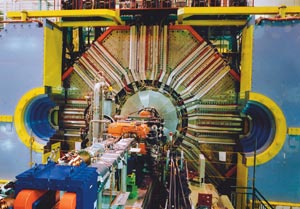The record performance of the KEK B-factory is currently supplying Belle with about 1 million B Bbar meson pairs per day. While data analyses on charge-parity (CP) violation and searches for new physics beyond the Standard Model continue, the vast amounts of accumulated data have helped another important aspect of Belle’s physics programme: the discovery of new particle states in the charm sector.

Recent additions to Belle’s new particle list are the Y(3940) and the strange charmed baryon Σc(2800), to be added to the ηc(2S), the D0*(2308), the D1(2427) and the X(3872) already discovered. This brings Belle’s total of new particles discovered to six.
Now it seems, however, that Belle’s new-particle tally may be seven. Last summer the collaboration reported strong evidence for a mass peak in the spectrum of particles recoiling against a J/Ψ in electron-positron collisions with a similar mass to the Y(3940). Although the mass of this new peak is the same as that of the Y(3940) within errors (measurement errors are about 10 MeV for both observations), the Belle team is not yet convinced that these two states are the same and, for the time being at least, are referring to the new object as the X(3940).
The X(3940) mainly decays into D plus anti-D* mesons, as expected for charmonium states with this mass. The Y(3940), on the other hand, does not seem to follow this pattern and its preference to decay into an w and a J/Ψ is difficult to understand in the context of heavy quark potential models, which have explained the charmonium spectrum up to now. The Y(3940) may not therefore be an ordinary quark-antiquark meson, but rather a “hybrid state” – a meson comprising a charmed quark, an anti-charmed quark and a gluon.
Belle’s particle hunters have their work cut out as they try to pin down the identity of the new particles they have already observed, while more data – and opportunities for more discoveries – pour in faster and faster.







